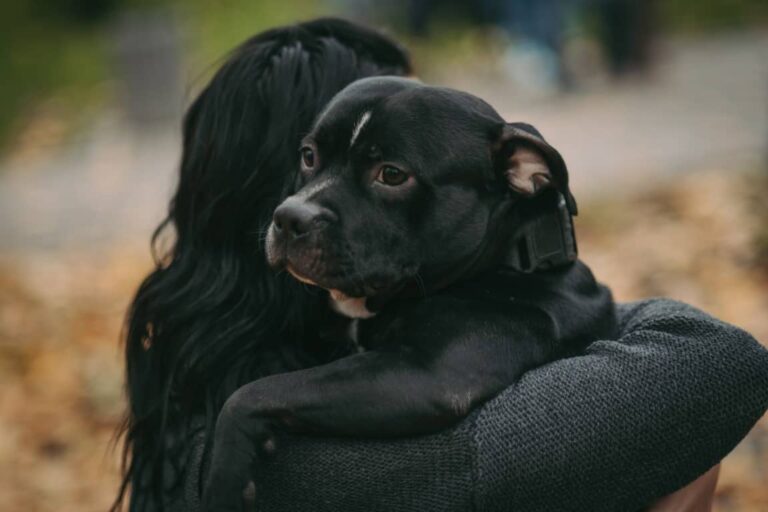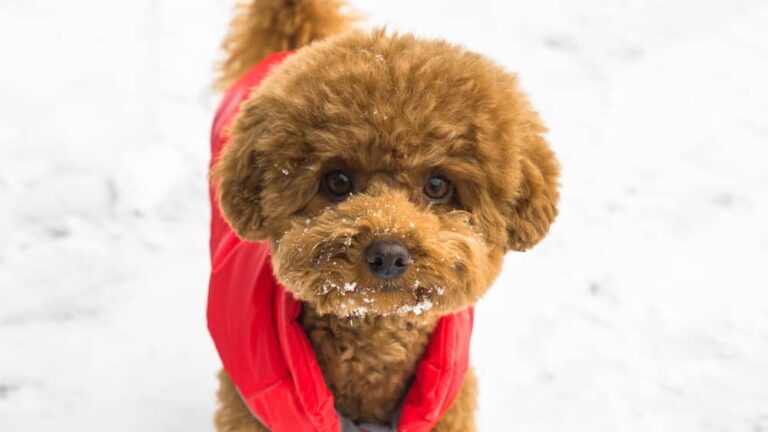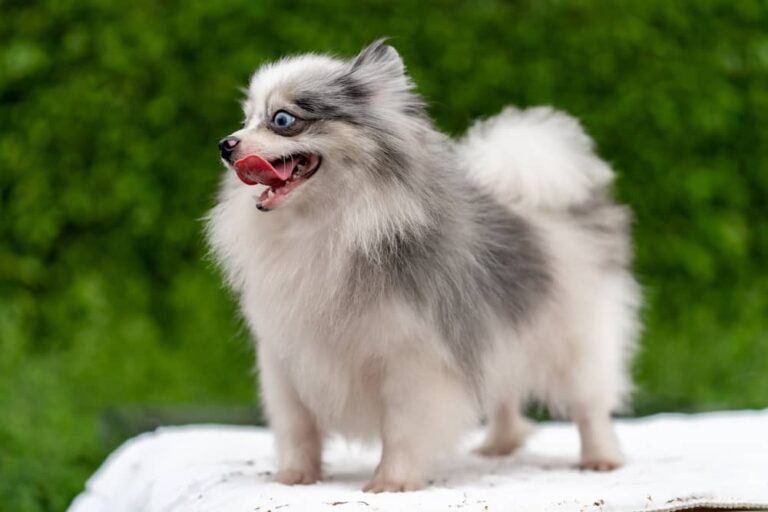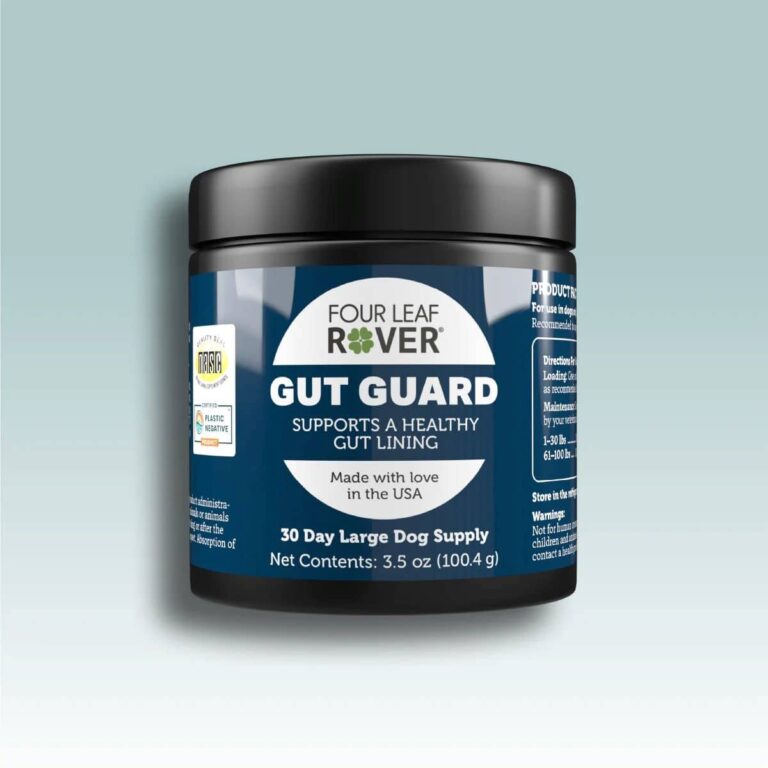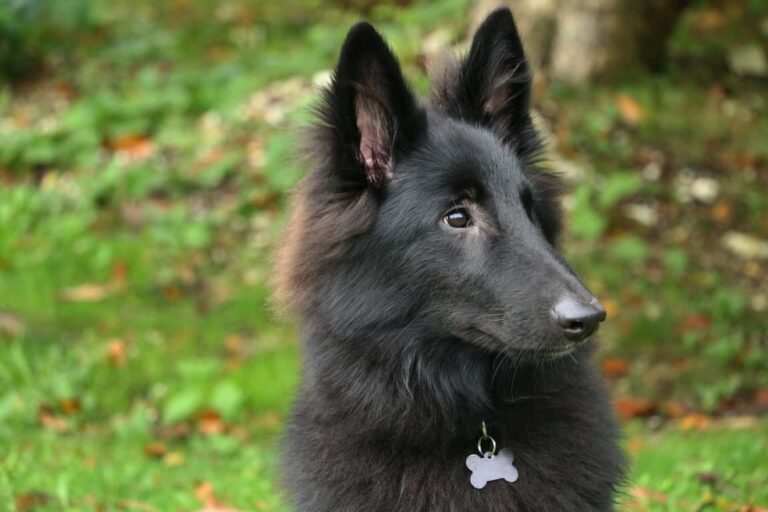Red Cantonese Bear Dog Full Grown – Ultimate Guide
The Red Cantonese bear dog full grown, often known as the Chinese Chongqing Dog, is a rare and historic breed that was developed in the Chinese province of Chongqing.
The Cantonese Bear Dog has gained popularity across the globe due to its distinctive appearance, loyal and protective nature, and rich cultural heritage.
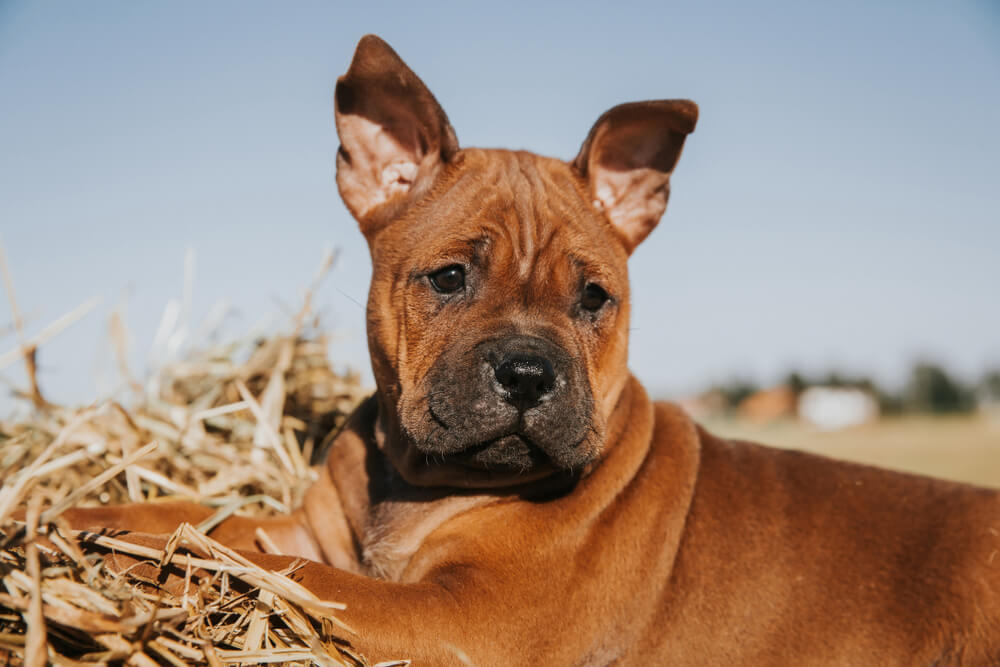
Originally developed for hunting, herding, and guarding, the Red Cantonese Bear Dog is distinguished by its strong frame, wrinkled brow, and jet-black tongue.
It is a fantastic alternative for owners looking for a breed with a strong feeling of independence and a natural protective sense due to its independent nature and strong loyalty.
Even though it’s becoming more and more popular, there are still just a few thousand Red Cantonese Bear Dog believed to be in existence worldwide.
Even so, the breed’s unique mix of physical and behavioral characteristics, as well as its rich cultural past, make it an interesting and popular breed for dog lovers worldwide.
Also Check: 5 Best Dog Playpens Indoor
The Origins of the Red Cantonese Bear Dog Full Grown:
The Red Cantonese Bear Dog full grown often called the Chinese Chongqing Dog, is a historical breed in China.
Although the breed’s exact history is unknown, it is thought to have evolved over several thousand years in the Chongqing area of the Sichuan Province in southwest China.
The breed was known for its power, stamina, and fearlessness and was primarily bred for hunting, herding, and guarding.
The name “bear dog” for the breed refers to its employment in southern China’s mountainous areas for bear hunting.
Because of its powerful jaws and robust frame, the Red Cantonese bear dog full grown was a good candidate for this job.
The breed’s protective attitude made it an ideal choice for guarding homes and other property, and it was also used to herd cattle.
The Red Cantonese Bear Dog was highly prized in this job because of its devotion to its owner and rapid threat perception.
Despite its lengthy history, the Chinese Kennel Club did not officially acknowledge the Red Cantonese Bear Dog until 1984.
Before it, the breed was not well-known outside of China and was even relatively uncommon there. But in recent years, the breed has become more and more well-liked both in China and internationally.
Sadly, the Cantonese Bear Dog breed has faced some difficulties lately.
Due to the popularity of the breed, there has been an increase in illegal breeding and smuggling, which has raised questions about the breed’s welfare and general health.
There are efforts underway to encourage ethical breeding and save the breed from exploitation and mistreatment.
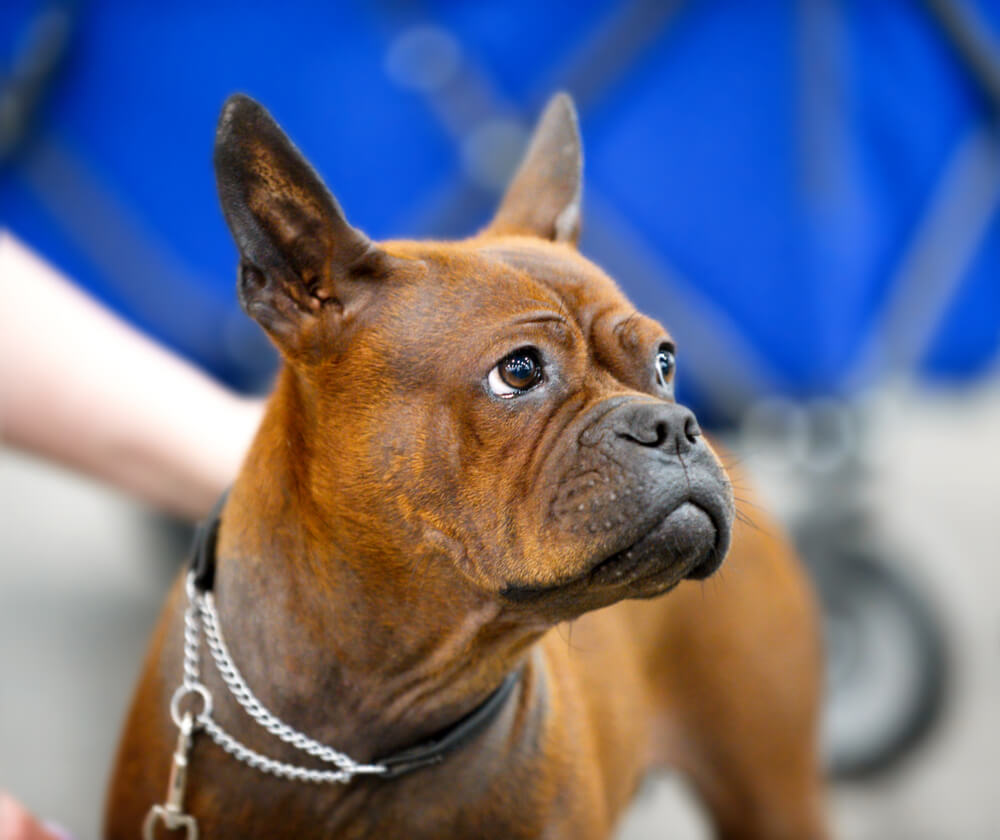
Despite these difficulties, the Cantonese Bear Dog breed continues to be a fascinating breed with a lengthy history and distinctive traits, contributing significantly to China’s cultural legacy.
Read our post for 19 Manly Dog Breeds for Guys, if you want to read about the loyal and manly dogs breeds similar to these Red Cantonese Bear Dog.
The Appearance of Cantonese Bear Dog Breed:
The medium-sized, muscular Cantonese Bear has a unique appearance. Some of the physical features that distinguish this breed include the following:
Size
The Red Cantonese Bear Dog Full grown is a medium-sized breed that normally weighs between 50 and 70 pounds and stands between 16 and 22 inches in height at the shoulder.
Coat
The breed has a short, coarse coat that is typically reddish-brown or fawn, however, it can also be black, blue, or brindled. The coat is thick and offers good protection from the cold.
Head
The head of the Cantonese bear dog breed is broad and big, and its forehead is visibly wrinkled. The breed has huge, robust teeth and a short, powerful muzzle.
Ears
The ears of the breed are triangular in shape, upright, and high on the head.
Tongue
The Cantonese Bear Dog’s jet-black tongue is one of its most distinctive characteristics; it is believed to be a genetic trait shared with a few other breeds, including the Chow Chow.
Tail
The strong, curved tail of the Red Cantonese Bear Dog breed is lifted high when the animal is alert or aroused.
Build
The breed has a deep chest, strong legs, and powerful jaws in addition to a muscular, athletic frame. It has an appearance that is slightly rectangular because its body is longer than its height.
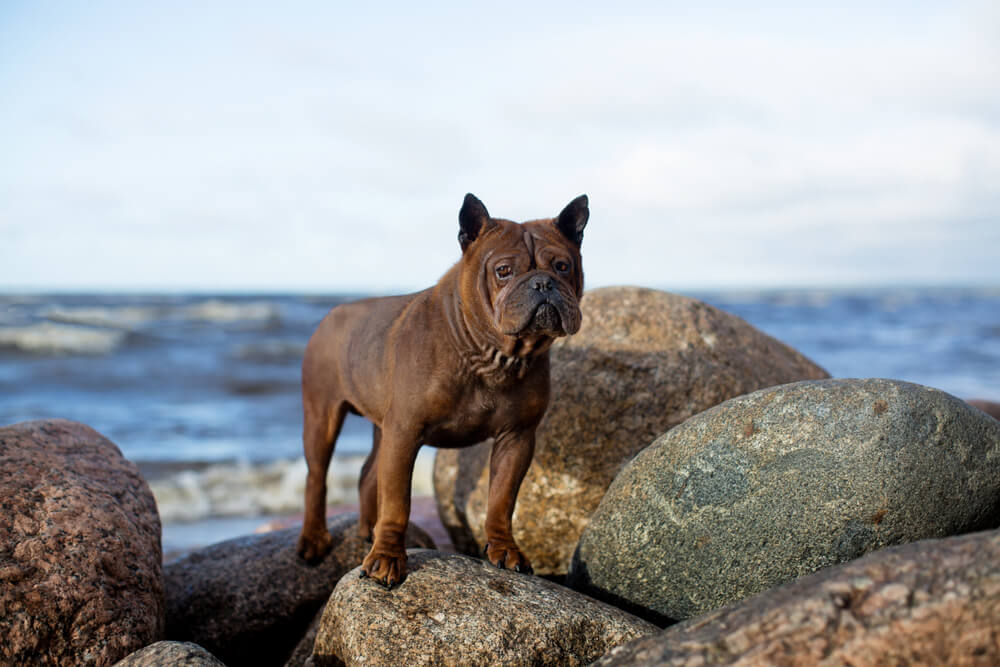
Generally, the physical features of the Cantonese Bear Dog breed are a reflection of its professional past as a hunting, herding, and security dog. Its powerful jaws and muscular body make it ideally adapted for these jobs, and its uncommon appearance and black tongue make it an interesting breed.
Also Check: The ultimate guide for spot and tango dog food review
The temperament of Red Cantonese Bear Dog Breed
The Red Cantonese Bear Dog Full Grown is renowned for its devoted, self-reliant, and guardian nature. Here are a few of the main characteristics that define this breed’s personality:
Loyal
The Cantonese Bear Dog Full Grown develops a close bond with its owner and is incredibly dedicated to its family. The strong loyalty of this breed is well recognized, and it will go to tremendous measures to protect its family.
Independent
The Red Cantonese Bear Dog is a breed that is independent and not overly dependent or needy.
Even though it loves its independence, it occasionally prefers to spend time alone even though it does appreciate spending time with its family.
Protectors
Parenting skills are a key characteristic of the cantonese bear dog breed. Because of its high level of awareness, this dog will immediately assess any threats to its family or home zone.
Although it is not naturally violent, if it feels threatened, it will not hesitate to defend its family or self.
Similarly, to Red Cantonese Bear Dog, we have some other fearless dogs with their origin explained and mystery uncovered in the list below,
- Black Pitbull
- Plott Hound Pitbull Mix
- Coonhound Mix
- Australian Mountain Doodle
- Black Mouth Cur Pitbull Mix – Ultimate Guide
Strong-willed
The cantonese bear dog breed is a stubborn breed that needs a strict and dependable owner. It’s important to define firm boundaries and regulations early on because this breed can be stubborn and may want to express its dominance.
Hesitant around strangers
The Cantonese Bear Dog can be suspicious of new people and may take some time to become used to them.
This breed is not extremely social or extroverted, and it may choose to avoid interacting with new people or animals.
Proactive Cantonese bear dog breed
The cantonese bear dog breed is an energetic breed that needs daily exercise and mental stimulation despite its independent character.
This breed benefits from training and other types of mental stimulation in addition to enjoying physical activity like running, hiking, and playing.
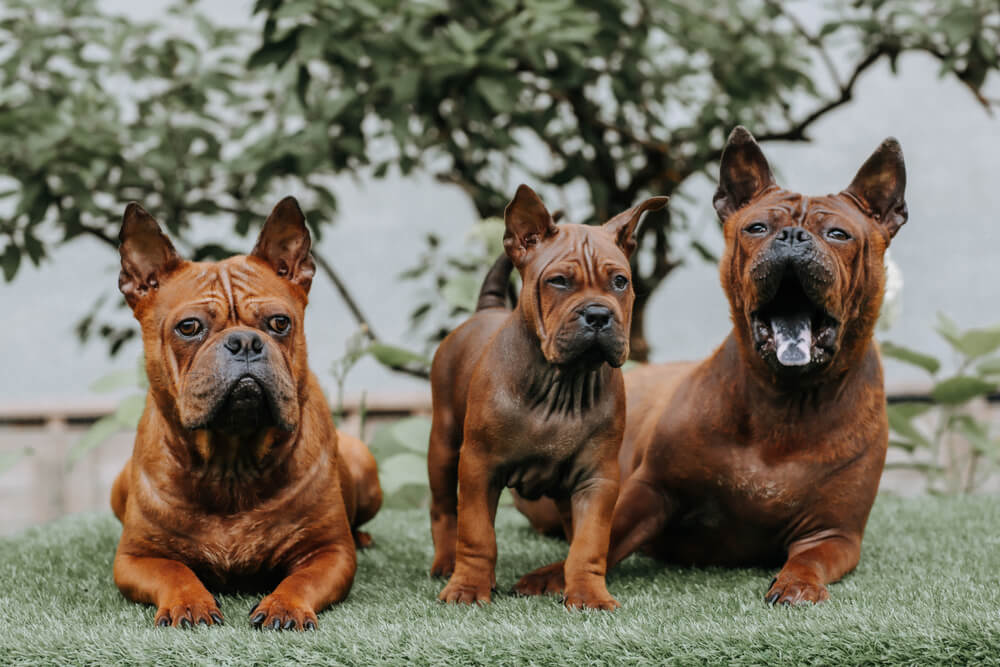
Generally, the Cantonese Bear Dog is an independent breed that is devoted and vigilant.
It can be hesitant around strangers and needs a forceful owner, but it is also fiercely loyal to its family and a superb companion for anyone who values a strong guard dog.
How to train a Red Bear Dog?
It can be rewarding to train a Red Bear Dog, but it takes patience, consistency, and a tough yet kind attitude. You can properly train your Cantonese bear dog by using the following training advice:
Socialization
All dogs need early socialization, but the Red Bear Dog breed in particular needs it because it is suspicious of strangers.
To help with the growth of your puppy’s confidence and adaptability, be sure to expose them to a variety of people, animals, and settings from an early age.
Encouraging behavior
The Red Cantonese Bear Dog responds well to training techniques that use positive reinforcement and reward desirable behavior with treats, compliments, and other incentives.
To encourage your dog and reinforce positive actions like sitting, waiting, and coming when called, use treats or toys.
Consistency
When training a red cantonese bear dog puppy, consistency is essential. Establishing clear standards and boundaries is important, as is being consistent in your teaching methods.
Be patient and persistent while teaching new behaviors or orders to your dog, and avoid confusing him by changing the rules or commands.
A firm but kind approach
The red Cantonese Bear Dog responds well to positive rewards, but it also needs to be trained with a rigorous and persistent method. While providing instructions, be firm yet gentle, and avoid using harsh penalties or physical corrections.
Physical activity and brain stimulation
The lively Cantonese Bear Dog needs a lot of exercises and mental stimulation to keep strong and content. Aside from training and mental stimulation exercises like puzzle toys, agility training, or etiquette lessons, make sure to give your dog daily walks, runs, or other physical activities.
Encourage obedience
By praising good behavior and discouraging negative behavior, you can improve obedience. When your dog begins acting out, use positive reinforcement and refocus its attention. Never scold or correct your dog with physical force or harsh corrections.
Overall, training a Cantonese Bear Dog requires a careful, dependable, firm yet gentle approach. This breed can become an obedient and devoted companion with the appropriate training and socialization.
Also Check: The Ultimate Guide For Rottweiler Puppies
Healthy and Tasty Dog Treats: Delight Your Pup with Nutritious Bites
Just like us, dogs deserve a balanced and nutritious diet to thrive. We’ll dive into the essential nutrients that fuel their boundless energy and keep those tails wagging happily.
From tips on choosing the best dog food to understanding dietary requirements for different breeds, we’ve got you covered.
So, let’s embark on this nourishing journey together and ensure your canine companion enjoys a vibrant and healthy life!
Don’t forget to check out our other nutrition articles for a full course of knowledge!
Food and Dietary Requirements
- Banana: Dogs can enjoy the natural sweetness and health benefits of bananas in moderation.
- Asparagus: A nutritious veggie that can be a crunchy and tasty treat for your furry friend.
- Strawberry: Rich in vitamins, strawberries make a delightful occasional snack for dogs.
- Orange Chicken: Plain cooked chicken without spices or sauces can be a safe protein source for dogs.
- Almond Butter: Avoid almonds, but dogs can indulge in unsalted and unsweetened almond butter as an occasional treat.
- Quesadilla: Plain tortilla with a small amount of cheese can be a simple treat for dogs.
- Pita Bread: A small piece of plain pita bread can be given as an occasional snack.
- Ricotta Cheese: Dogs may enjoy a little ricotta cheese as an occasional treat, but avoid excessive amounts.
- Provolone Cheese: Offer a tiny piece of provolone cheese as a special reward for your furry companion.
- Banana Pudding: Plain banana pudding without additives or artificial sweeteners can be an occasional treat.
- Watermelon: A refreshing and hydrating fruit that dogs can enjoy in small, seedless portions.
- Coffee Chew Wood: Coffee and any type of wood should be kept away from dogs, as they are harmful.
- Oatmeal Cream Pie: Avoid sugary snacks like oatmeal cream pies, as they are not suitable for dogs.
- Teriyaki Sauce: Skip the teriyaki sauce, as the high sodium content is unhealthy for dogs.
- Mushroom Cream Soup: Keep creamy soups, especially those with mushrooms, away from your furry friend.
Arm & Hammer Fruit Twisters Fresh Breath Dental Treats for Dogs in Fruity Strawberry Flavor Baking Soda Dog Treats for Dental Health
Vitamins and Nutritional Pros and Cons
- Banana:
- Vitamin B6:
- Pros: Supports metabolism, immune system, and red blood cell production.
- Cons: Overconsumption may cause gastrointestinal upset due to high fiber content.
- Vitamin C:
- Pros: Acts as an antioxidant, boosts the immune system, and promotes healthy skin.
- Cons: Dogs produce their own vitamin C, so supplementation is usually unnecessary.
- Vitamin B6:
- Asparagus:
- Vitamin A:
- Pros: Essential for vision, immune function, and cell growth.
- Cons: High-fiber content may lead to stomach upset if given in large quantities.
- Vitamin C:
- Pros: Supports the immune system and helps absorb iron.
- Cons: Overfeeding may lead to gas or mild digestive issues.
- Vitamin A:
- Strawberry:
- Vitamin C:
- Pros: Provides a boost to the immune system and has antioxidant properties.
- Cons: Should be given in moderation due to natural sugars.
- Vitamin C:
- Orange Chicken:
- Vitamin B6:
- Pros: Supports metabolism and brain health.
- Cons: Avoid giving chicken with spices or sauces, which can be harmful.
- Vitamin B6:
- Almond Butter:
- Vitamin E:
- Pros: Protects cells from damage and promotes healthy skin and coat.
- Cons: Almonds themselves can be a choking hazard, so avoid direct consumption.
- Vitamin E:
- Quesadilla:
- Vitamin B6:
- Pros: Supports energy metabolism and nervous system function.
- Cons: High-fat content in cheese may lead to weight gain if given excessively.
- Vitamin B6:
- Pita Bread:
- Various B Vitamins:
- Pros: Essential for energy metabolism and nerve function.
- Cons: Pita bread can be high in carbohydrates, so feed in moderation.
- Various B Vitamins:
- Ricotta Cheese:
- Vitamin A:
- Pros: Important for vision and immune system support.
- Cons: High-fat content, so feed in small amounts to avoid weight gain.
- Vitamin B12:
- Pros: Supports nerve function and red blood cell production.
- Cons: Excessive consumption may lead to gastrointestinal upset.
- Vitamin D:
- Pros: Aids calcium absorption and supports bone health.
- Cons: Over-supplementation can lead to toxicity, as dogs can’t regulate vitamin D as effectively as humans.
- Vitamin K:
- Pros: Crucial for blood clotting and bone health.
- Cons: Excessive vitamin K can interfere with blood-thinning medications.
- Calcium:
- Pros: Essential for bone and teeth health, muscle function, and nerve transmission.
- Cons: Over-supplementation can lead to skeletal problems and urinary issues.
- Vitamin A:
- Provolone Cheese:
- Vitamin A, Vitamin B12, Vitamin K, Calcium:
- Pros: Similar to ricotta cheese, these vitamins and minerals offer various health benefits.
- Cons: High-fat and sodium content, so feed in moderation to avoid health issues.
- Vitamin A, Vitamin B12, Vitamin K, Calcium:
- Banana Pudding:
- Vitamin B6:
- Pros: Supports metabolism and various body functions.
- Cons: Pudding may contain added sugars and artificial ingredients, which are not suitable for dogs.
- Vitamin B6:
- Watermelon:
- Vitamin A, Vitamin B6, Vitamin C:
- Pros: Provide essential vitamins and hydration.
- Cons: Remove seeds and feed seedless watermelon in small portions to prevent choking.
- Vitamin A, Vitamin B6, Vitamin C:
Remember, treats should only make up a small part of your dog’s diet, and it’s essential to provide a balanced and suitable meal plan for their overall well-being.
Always consult with a veterinarian if you’re unsure about feeding any new food to your dog.
Health issues of Red Cantonese Bear Dog Full grown
The Red Bear Dog has a long lifespan and is typically a healthy breed, but like all dogs, it is vulnerable to several health problems. The following are a few of the Cantonese Bear Dog’s most typical health issues:
Dysplastic Hips
Genetic hip dysplasia affects the hip joint and results in discomfort, stiffness, and lameness. Red Cantonese Bear Dog Full grown and other enormous and giant breed dogs are particularly prone to this problem.
To help prevent this issue, it’s crucial to find a breeder who tests their dogs for hip dysplasia. You should also keep your dog at a healthy weight and provide him with frequent exercise.
Knee luxation
The condition known as patellar luxation occurs when the kneecap slips or slides. This could result in arthritis, lameness, and pain in the affected joint.
The Red Cantonese Bear Dog Full grown is prone to this ailment, therefore it’s crucial to maintain a healthy weight for your pet and keep an eye on their activity level to prevent harm.
Hypothyroidism
When the thyroid gland does not generate enough thyroid hormone, it is known as hypothyroidism. This illness can result in a variety of symptoms, such as weight gain, fatigue, and skin issues.
This issue is common in Cantonese Bear Dogs, so it’s crucial to keep an eye on your dog’s thyroid levels and to give him routine veterinary care.
WOPET Automatic Smart Feeder Dog Food Dispense with Camera,7L App Control
Allergies
Allergies in Cantonese Bear Dogs can lead to skin irritation, itching, and other symptoms. It’s critical to recognize and stay away from allergies that could make your dog ill, and to collaborate with your veterinarian on an effective treatment strategy.
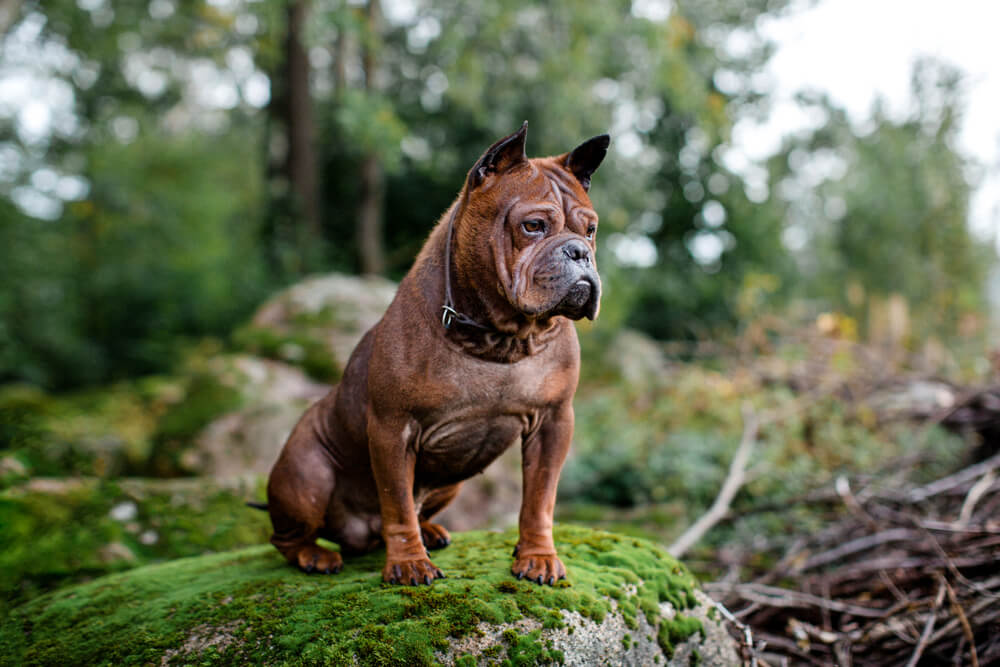
Infected ears
Ear infections in Cantonese Bear Dogs can occur, especially if their ears are not regularly cleaned and cared for.
Regularly cleaning your dog’s ears is crucial, as is keeping an eye out for infection symptoms like redness, discharge, or an unpleasant odor.
To keep your Red Bear Dog healthy and happy, it’s essential to provide them with routine veterinary care and to regularly check their health.
You can ensure a long and healthy life for your Red Bear Dog by working with a reliable breeder, giving your dog the right nutrition and exercise, and keeping an eye out for symptoms of health issues.
Maintenance of Red Bear Dog:
Although the Red Cantonese Bear Dog is a breed that requires little maintenance, it does need some basic maintenance to stay healthy and content.
If you’re thinking about getting a Red Cantonese Bear Dog, these are some important maintenance aspects to take into account:
Grooming Red Bear Dog
The medium-length, double coat of the Red Bear Dog sheds slightly all year round. To avoid matting and remove loose hair, they must be brushed frequently.
During the shedding season, you should brush your Red Cantonese Bear Dog’s coat more regularly than once each week. The breed also gains from routine bathing to maintain the condition of its skin and coat.
Exercise
A fairly active breed, the Cantonese Bear Dog needs regular exercise to maintain health and avoid boredom.
While they enjoy quick walks, runs, and other outside activities, they are also happy to play inside and with interactive toys.
Diet
It’s critical to provide your Cantonese Bear Dog with a nutritious meal that is of the highest quality and matches its needs.
To avoid obesity, you should avoid overfeeding your dog and select a meal that is suitable for their age, size, and level of exercise.
You can take a look at the food which is
Tooth care
The Cantonese Bear Dog is prone to dental issues like gum disease and tooth rot, much like any dog.
To encourage oral hygiene, you should frequently brush your dog’s teeth and provide them with dental chews or toys.
Medical care
Despite the Cantonese Bear Dog breed being in good health, it is crucial to give it routine veterinary treatment to prevent and treat any health problems.
Schedule routine checkups and vaccines, and keep an eye out for your dog’s symptoms of illness or injury.
You can help make sure that your Cantonese Bear Dog is healthy and content for many years to come by giving them frequent care and attention in these areas.
Cantonese Bear Dog Price:
The Cantonese Bear Dog Price might differ based on the breeder, the dog’s age and gender, its bloodline and pedigree, as well as its general health and disposition.
A purebred Cantonese Bear Dog Price often costs between $1,000 and $3,000. For dogs with extraordinary genes or show-quality conformation, some breeders may charge a premium.
The cost of a Cantonese Bear Dog might differ based on the breeder, the dog’s age and gender, its lineage and pedigree, as well as its general health and temperament.
A purebred Cantonese Bear Dog Price often costs between $1,000 and $3,000. For dogs with extraordinary genes or show-quality conformation, some breeders can charge a premium.
Owning a Cantonese Bear Dog might cost more than just the initial purchase price due to additional expenses including veterinary care, grooming, food, and supplies. Budgeting for these maintenance expenses is essential if you want to be able to give your dog the care and attention they require for the duration of their life.
Also Check: The Ultimate Guide For Australian Labradoodle
Conclusion for Red Cantonese Bear Dog Full grown
In conclusion, the Cantonese Bear Dog is a rare and interesting breed with an intriguing past and distinguishing physical traits.
Because of its flexibility and low maintenance requirements, this loving and devoted breed is becoming more and more popular among dog fans, making it a great option for anyone looking for a loyal and devoted companion.
The Cantonese Bear Dog can bring its owners a lot of enjoyment and company over many years with the right upbringing and care.
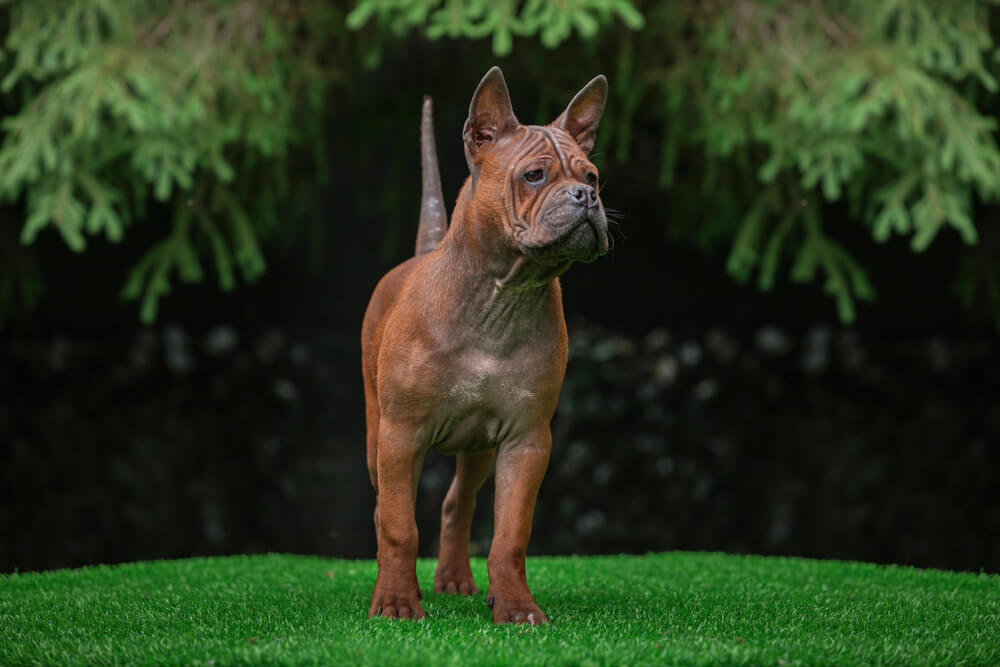
FAQ’S
How much is a Cantonese bear dog?
A variety of factors including the breeder’s location, the dog’s lineage, the dog’s age, and the dog’s gender, might affect the cost of a Cantonese Bear Dog.
Yet, the price range for a Cantonese Bear Dog from a good breeder can range from $1,500 to USD 5,000.
How big does a red Cantonese bear dog get?
A small to medium-sized breed, the Cantonese Bear Dog normally reaches heights of 12 to 16 inches (30 to 41 cm) and weights of 20 to 40 pounds (9 to 18 kg).
Where can I buy a red Cantonese bear dog?
A respectable breeder who specializes in this breed can sell you a red Cantonese Bear Dog. You can look for Cantonese Bear Dog breeders online or by contacting your local dog clubs or breed-specific rescue groups.
To guarantee that you are getting a healthy and well-bred dog, it is essential to do thorough research and only buy from a reputable breeder.
